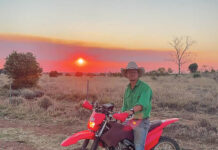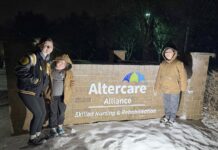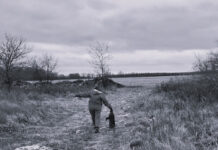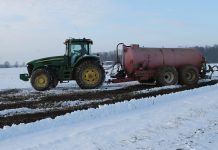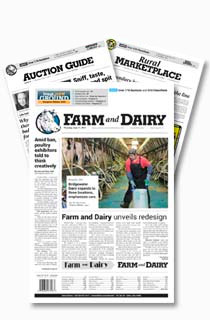
Each spring, as sure as there will be blooming daffodils and morel mushrooms, veterinarians and wildlife officers will receive calls concerning orphaned and lost wild animals. Most are from good folks trying to lend a helping hand, while others are searching for an excuse to keep the animal as a pet.
Unfortunately, everyone is likely to lose. As a wildlife officer, I’ve been to animal doctors’ offices to help resolve such issues, as they’ve done their best to preserve their client’s business while explaining the circumstances with a professional’s eye. I’ve been to houses in mid-summer to remove wildlife that had been “adopted” after such “tragedies.” Many refused to understand why they couldn’t keep “Rocky” raccoon, frequently accompanied by tears and, all too often, anger. It was a job I often dreaded.
I believe many of these situations begin as a perceived good deed, but end with animals dying in their care or with a bite and a trip to the emergency room. Laws may also be violated. Unless there’s an obvious problem, such as broken bones or bleeding wounds, it’s best to leave baby animals alone.
While living in the wild can be perilous, many concerns are misplaced. Those wild babies are seldom orphaned or lost, but are learning the ropes of living on their own. Removing them damages their chances for survival, steals them from their parents and exposes you and your pets to health-threatening parasites and diseases. Typical scenarios can be categorized by either FEATHER or FUR.
Fur
Raccoons, opossums, and skunks often raise their young in close proximity to humans. As they grow, the young begin following their parents on feeding forays or wander out on individual exploratory missions.
These critters should not be handled, regardless of the “cute” factor. They’ll inflict bites and can carry disease, especially for domestic animals. While incidents of rabies are rare, it’s still a factor. Distemper and parasitic infestations are common. Keep garage doors closed and don’t leave pet food on the porch at night. Open trash is an absolute magnet. Ignore this advice and you may want to keep your family doctor, not your veterinarian, on speed dial. You may also want to find a remedy that will help remove that malodorous skunk aroma, too.
Deer fawns are found along trails, fields and woodlots. They appear helpless and scared, begging for a helping hand. They aren’t lost, their mothers are never far away and she’ll watch helplessly as you steal her offspring. Their fear is of you. Fawns should never be removed from where they’re found. If moved, return them to the area immediately. Possession is illegal and often results in the animal being euthanized.
Rabbits nest in a variety of habitats. They don’t stay with their offspring, avoiding contact because that will only draw predators to the nest. They feed their young at night and the nest will empty in about three weeks. Bouncing little bunnies are already feeding on their own.
Baby squirrels leave their nest to test their climbing skills. If they fall, their parents will fetch the pup and return it to safety. They have alternate nesting sites should one be damaged.
Avoid contact and give squirrels plenty of time to fix their own problems.
If you’re having issues with furbearers, the Division of Wildlife has a list of licensed removal experts that can help. You can call 1-800-WILDLIFE for advice and to obtain information that can help you contact a licensed rehabilitator.
Feather
Baby birds are either nestlings or fledglings. Nestlings are flightless, lack feathers or are covered in down. They’re often found after winds blow them or their nest from a tree. It’s best to return the bird to the nest or construct one to place it in.
Fledglings have feathers covering their body and are just learning to leave the nest; they leave for short periods and perch on branches or hop on the ground. If seen, keep control of your pets. The parents will continue to bring food until it’s capable of living on its own.
No, young birds will not be abandoned because you’ve touched them. That was your grandparents’ way of telling you to leave those birds alone. Age is fostered by experience, which leaves behind wisdom.
Ducks and geese will nest in shrubbery and yards near bodies of water. Young will separate from their brood in search of food. Often, local parks are home to mallards and Canada geese which like to nest in unlikely places. They also enjoy marching their young across streets and lawns and geese will graze with their goslings like a herd of cattle. Enjoy the parade and watch your step.
It’s also good to keep in mind that waterfowl can be very protective. Some adult geese and swans have excessively bad attitudes and are known for attacking people who get too close. It’s all fun until you get your face flapped.
Rules. Here are some basic rules when dealing with wildlife:
• Think before you act. Check for nests before cutting trees or clearing brush and, when possible, delay work until autumn.
• Educate children to respect wildlife, emphasizing wild animals shouldn’t be handled.
• Keep pets inoculated against parasites and diseases and under control so they don’t raid nests.
• Contact wildlife officials before taking action; call 1-800-WILDLIFE.
• Don’t expect to keep wild animals.
From the African savannas to the fencerow behind the yard and the depths of Lake Erie, natural mortality and predation is part of that famous circle of life. There’s no big, bad wolf or Scar from the Lion King. They’re animals living as they were designed. As uncomfortable as it can sometimes make our human psyche; “One must die so many might live” is an especially true concept in all of our wild places. We may choose to look away, but we should never choose ignorance.
“Let us… permit nature to take her own way; she better understands her own affairs than we.”
— Michel de Montaigne



